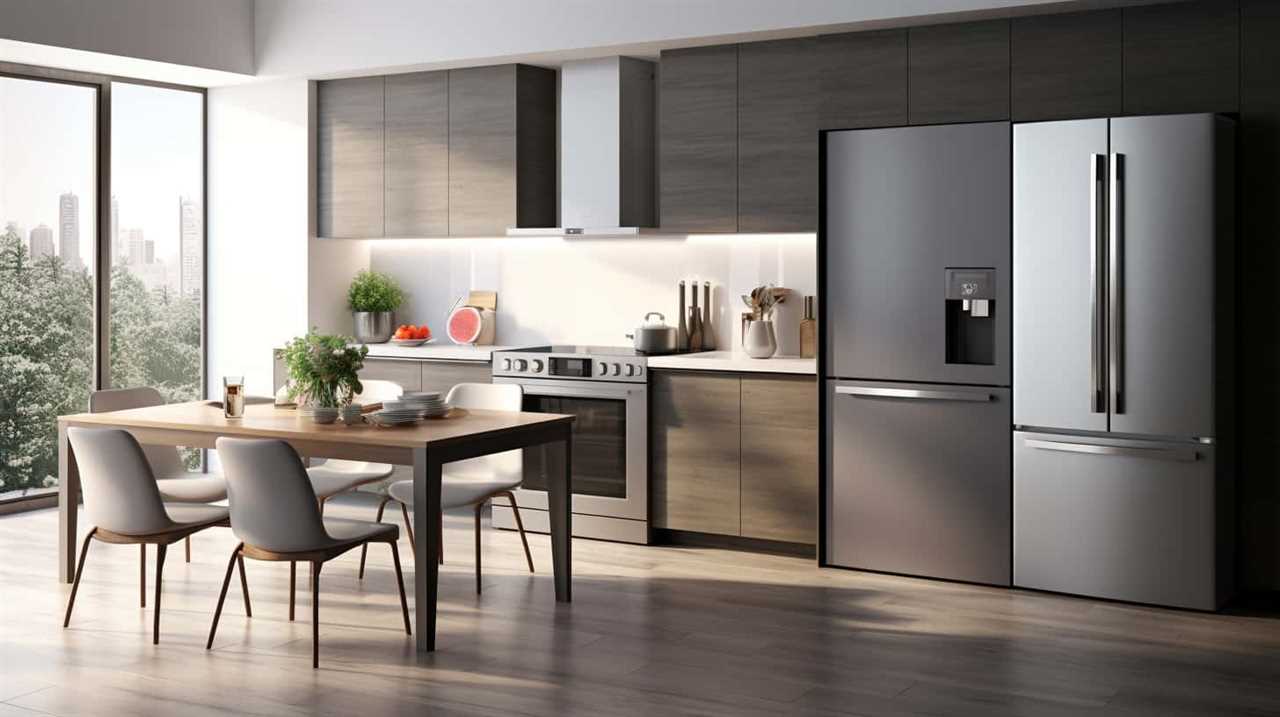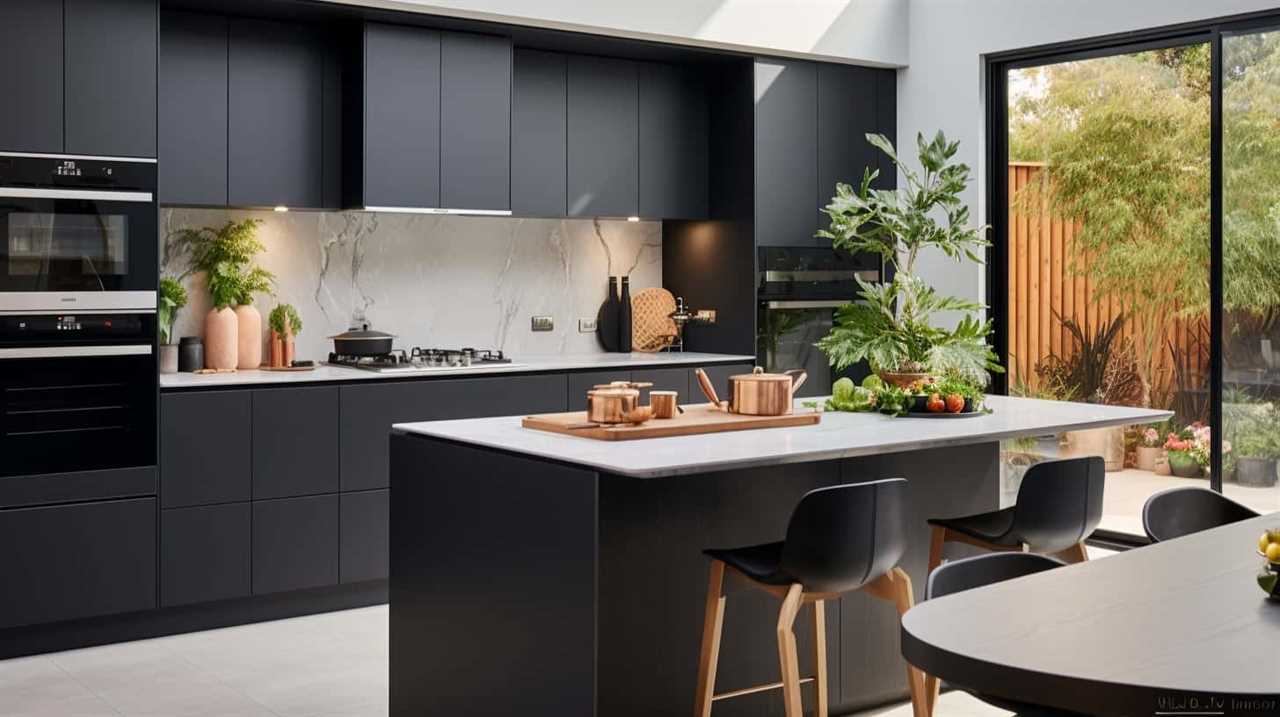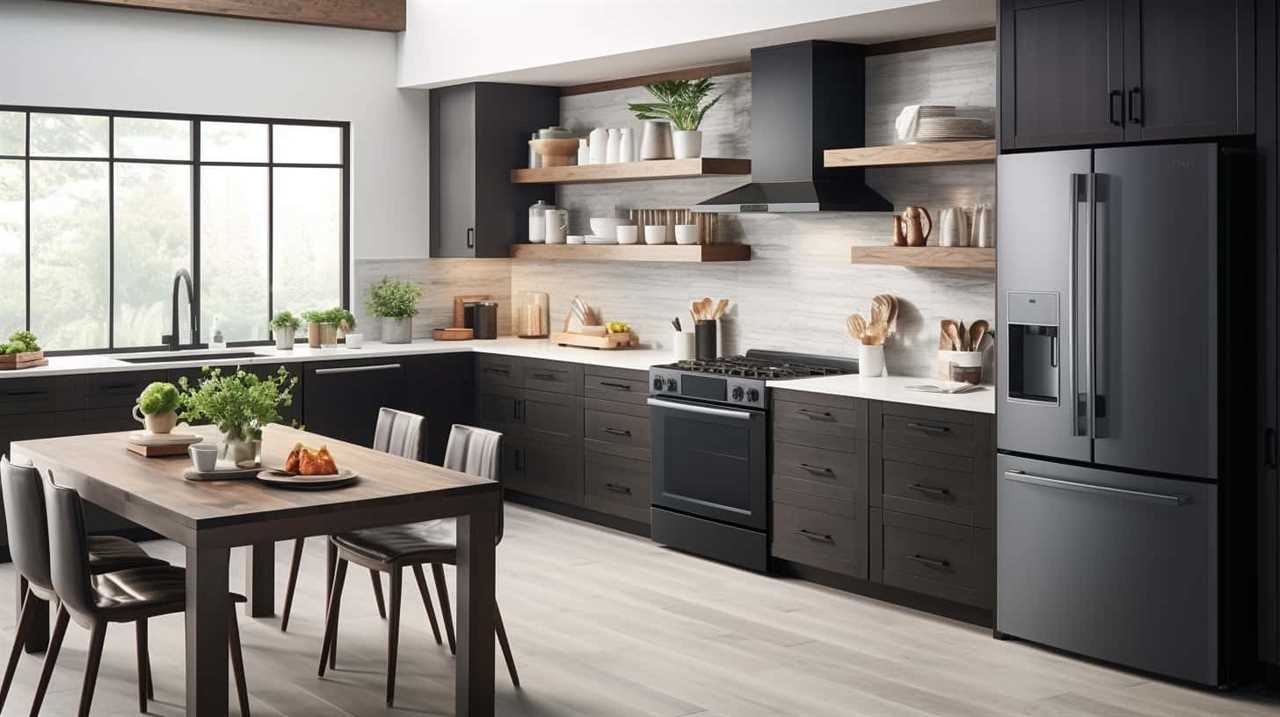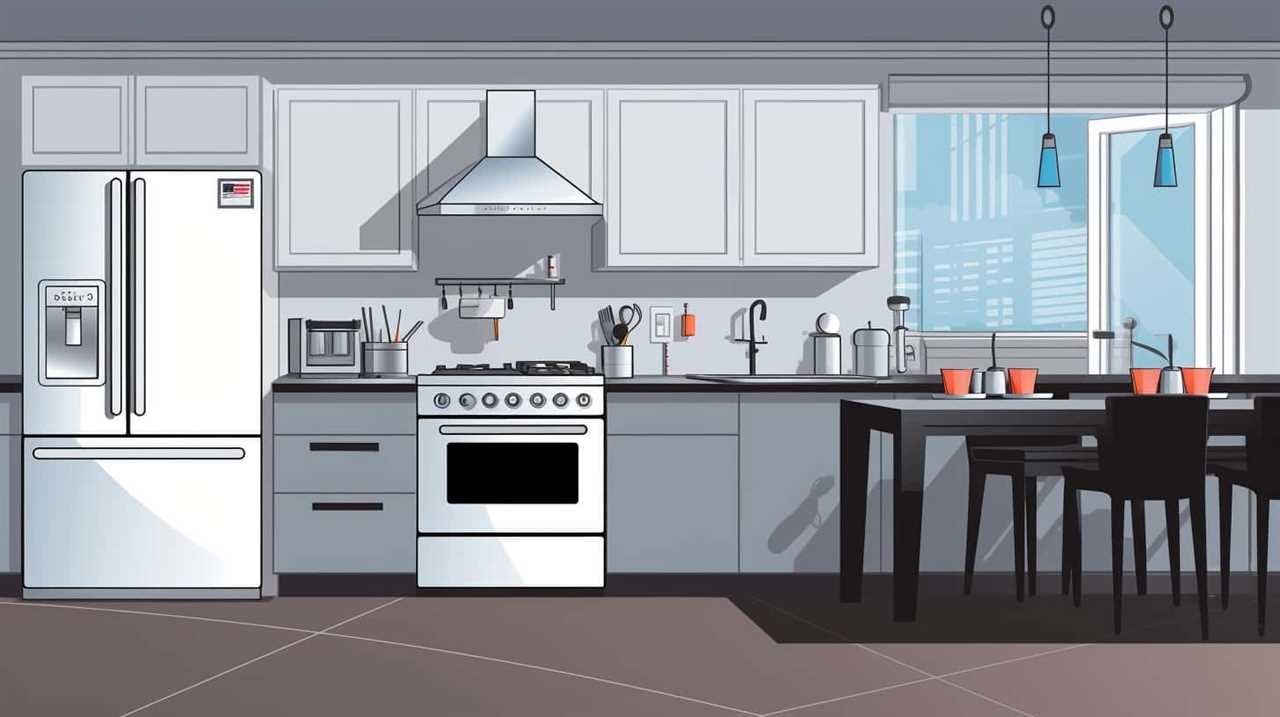Appliances play a crucial role in our everyday routines, offering us convenience and ease. Nonetheless, their usage can pose certain dangers, especially related to electrical hazards. That’s why appliances are grounded to guarantee safety and safeguard both individuals and the electrical setup.
In this article, we will delve into the reasons behind the practice of earthing appliances. We will explore the importance of adhering to electrical safety standards and regulations, as well as the role grounding plays in preventing electric shocks and fires.
Additionally, we will discuss the benefits of properly earthed appliances and the technological advancements that enhance their safety.
By understanding the reasons behind appliance earthing, we can better appreciate the significance of this practice in ensuring our well-being and the longevity of our electrical systems.

Key Takeaways
- Earthed appliances provide a direct discharge path for excess electrical energy into the ground, preventing electrical shock.
- Grounding wires connect the metal parts of appliances to the Earth, redirecting potential electrical leakage or faults away from users.
- Building codes require grounded power outlets to reduce the risk of electrical shock, prevent fires, and improve equipment stability.
- Effective grounding methods are essential for overall electrical safety in residential buildings, ensuring the proper functioning and longevity of appliances and electrical systems.
The Basics of Earthed Appliances
Earthed appliances are designed to prevent electrical shock by providing a direct path for excess electrical energy to safely discharge into the ground. In residential buildings, grounding is of utmost importance to ensure the safety of occupants and to protect electrical equipment. By connecting the metal parts of appliances to the Earth through grounding wires, any potential electrical leakage or faults are redirected away from the user. This prevents the buildup of dangerous electrical charges that could result in electrocution.
Grounded power outlets play a crucial role in this process, as they provide a secure and reliable connection to the Earth. The benefits of using grounded power outlets include reduced risk of electrical shock, enhanced protection against electrical fires, and improved stability of electrical equipment.
Electrical Safety Standards and Regulations
Electrical safety standards and regulations play a crucial role in ensuring the proper grounding of appliances and the overall safety of electrical systems in residential buildings. These standards and regulations are put in place to protect people and property from the dangers of electrical faults and accidents.
One of the key aspects of these standards is the requirement for effective electrical grounding methods. Electrical grounding provides a path for electrical current to flow safely into the earth, preventing the risk of electric shock and reducing the potential for electrical fires. It also helps to stabilize electrical systems and protect sensitive electronic equipment from power surges.

The importance of electrical grounding cannot be overstated, as it is a fundamental aspect of electrical safety that ensures the proper functioning and longevity of appliances and electrical systems.
Understanding Grounding and Earthing
Grounding and earthing are essential for the safe operation of appliances, as they provide a reliable pathway for electrical current to dissipate into the earth, thereby minimizing the risk of electric shock and ensuring the overall safety of electrical systems. There are different types of grounding systems that can be used, depending on the specific requirements and regulations of the electrical installation. These include the single-point grounding system, the multiple-point grounding system, and the isolated grounding system. Each system has its own advantages and is suitable for different applications. In addition to providing safety for appliances, grounding also plays a crucial role in lightning protection. When lightning strikes, the grounding system provides a low-resistance path for the lightning current to flow into the earth, preventing damage to the electrical system and reducing the risk of fire or electrical failure.
| Grounding System | Description |
|---|---|
| Single-Point Grounding | Connects all grounding conductors to a single point, typically the ground rod |
| Multiple-Point Grounding | Connects grounding conductors to multiple points, providing redundancy and fault tolerance |
| Isolated Grounding System | Provides a separate grounding conductor for sensitive equipment to minimize interference and electrical noise. |
Protection Against Electric Shocks
Appliances are earthed to provide protection against the risk of electric shocks. This is a vital safety measure in electrical systems. The role of earthing in these systems is to provide a path of least resistance for electric current to flow into the ground. By doing so, it prevents the buildup of electric potential on the exposed metal parts of appliances, reducing the risk of electric shock to users.
However, earthing alone is not sufficient to ensure safety. Insulation plays a crucial role in preventing electric shocks by creating a barrier between live conductors and any conducting material that may come into contact with them. Insulation materials, such as rubber or plastic, are carefully selected and applied to electrical cables and wires to provide reliable protection against electric shocks.

To emphasize the importance of insulation in preventing electric shocks, consider the following:
- Insulation acts as a physical barrier, preventing direct contact with live conductors.
- Proper insulation materials have high resistivity, minimizing the flow of electric current.
- Insulation is tested for durability and effectiveness to ensure long-term protection.
- Regular inspections and maintenance are crucial to identify any signs of insulation degradation.
- Compliance with electrical safety standards and regulations ensures the use of reliable insulation materials and practices.
Preventing Electrical Fires
Preventing electrical fires is a crucial aspect of electrical safety. One way to achieve this is through the grounding of electrical appliances. Grounding helps to prevent the accumulation of excess electrical charge, reducing the risk of electrical fires.
Additionally, implementing fire safety measures such as regular maintenance, proper installation, and using appropriate circuit breakers can further minimize the chances of electrical fires occurring.
Grounding Electrical Appliances
To ensure the safety of electrical systems and minimize the risk of electrical fires, it is crucial to establish a secure connection between appliances and the Earth. Grounding electrical appliances is an essential step in preventing electrical fires and protecting both individuals and property.

Here are five key points to consider regarding the grounding of electrical equipment:
- Grounding provides a path for electrical faults to safely dissipate into the Earth, preventing the buildup of excessive voltage and reducing the risk of electrical shocks and fires.
- There are different grounding methods, including grounding through a metal conduit, grounding through a grounding electrode system, and grounding through a grounding conductor.
- Grounding helps to stabilize the voltage levels in electrical systems, ensuring that electrical equipment operates safely and efficiently.
- Proper grounding reduces the risk of electrical noise and interference, improving the overall performance and reliability of electrical systems.
- Regular inspection and maintenance of grounding systems are crucial to ensure their effectiveness and compliance with electrical safety standards.
Fire Safety Measures
One important measure for preventing electrical fires is implementing effective fire safety protocols. Fire prevention is crucial in mitigating the risks of electrical hazards. Electrical fires can occur due to various reasons, such as faulty wiring, overloaded circuits, or malfunctioning appliances. To prevent these fires, it is essential to have proper fire safety measures in place.
This includes regular inspection and maintenance of electrical systems, ensuring proper installation of electrical equipment, and following safety guidelines when using appliances. Adequate training and awareness about fire prevention can also help individuals identify potential hazards and take necessary precautions. By implementing these fire safety measures, the risks of electrical fires can be significantly reduced.
Transitioning into the subsequent section about ground fault circuit interrupters (GFCIs), these devices play a crucial role in detecting and preventing electrical faults that can lead to fires.

Ground Fault Circuit Interrupters (GFCIs)
Ground Fault Circuit Interrupters (GFCIs), which are essential for enhancing electrical safety, are devices that detect small imbalances in electrical currents and quickly interrupt the circuit to prevent electrical shock. GFCIs provide ground fault protection by monitoring the flow of current in a circuit and comparing the current going out with the current coming back. If there is even a slight difference, it indicates that some current is leaking, possibly through a person.
Here are five key features of GFCIs:
- GFCIs are designed to trip and interrupt the circuit within milliseconds to prevent electrical shock.
- They are typically installed in areas where water is present, such as kitchens, bathrooms, and outdoor outlets.
- GFCIs have a test button to ensure they are working correctly and a reset button to restore power after a trip.
- These devices can provide protection to multiple outlets by being installed at the first outlet in a circuit.
- GFCIs are an important safety measure in preventing electric shock and should be regularly tested to ensure they are functioning correctly.
Surge Protection and Grounding
In addition to providing ground fault protection, another crucial function of Ground Fault Circuit Interrupters (GFCIs) is surge protection and grounding. Surge protection is essential to safeguard electrical appliances and devices from voltage spikes, which can occur due to lightning strikes or power surges. Grounding, on the other hand, ensures that excess electricity is safely directed to the earth, preventing electrical shocks and damage to equipment. To further emphasize the importance of surge protection and grounding, consider the following table:
| Surge Protection | Grounding in Lightning Storms |
|---|---|
| Surge protectors prevent voltage spikes by diverting excess electricity to the ground. | Grounding in lightning storms protects against lightning strikes by providing a path for the electrical current to follow, reducing the risk of damage to appliances. |
Importance of Earthed Appliances in Wet Areas
Ensuring the safety of individuals in wet areas is crucial, and earthed appliances play a key role in effectively grounding excess electricity. This is particularly important in wet areas where the risk of electrical hazards is heightened. Here are five key reasons why earthed appliances are essential in these environments:

- Protection against electric shocks: The grounding of appliances reduces the risk of electric shocks by providing a safe path for excess current to flow into the ground.
- Prevention of electrical fires: By grounding excess electricity, earthed appliances help prevent electrical fires caused by overheating or short circuits.
- Minimization of voltage surges: Wet areas are prone to voltage surges, which can damage sensitive electronic devices. Earthed appliances help to minimize these surges and protect equipment.
- Compliance with safety regulations: Many safety regulations require the use of earthed appliances in wet areas to ensure the well-being of individuals.
- Enhanced personal safety: By using earthed appliances, individuals can feel confident that they are taking necessary safety precautions to protect themselves from potential electrical hazards.
Grounding for Electronic Devices and Appliances
One key aspect of electrical safety involves the grounding of electronic devices and appliances. Grounding, also known as earthing, is a crucial step in ensuring the safe operation of electrical systems. In electronic circuits, grounding provides a reference point for voltage levels and helps to prevent electrical shock hazards. It is essential for maintaining the integrity of signal transmission and reducing electromagnetic interference. In electrical systems, grounding plays a vital role in diverting excess electrical current to the ground, preventing damage to equipment and reducing the risk of electrical fires.
To illustrate the importance of grounding in electronic devices and appliances, consider the following table:
| Grounding Benefits | Explanation |
|---|---|
| Voltage stability | Grounding provides a stable reference point for voltage levels, ensuring accurate and reliable operation of electronic devices. |
| EMI reduction | Grounding helps to minimize electromagnetic interference, improving the performance and reliability of electronic circuits. |
| Electrical safety | Grounding diverts excess electrical current to the ground, reducing the risk of electrical shock hazards and preventing equipment damage. |
Understanding the significance of grounding in electronic circuits and electrical systems is crucial for ensuring safety and optimal performance. In the next section, we will explore another important aspect of electrical safety: earth leakage circuit breakers (ELCBs).
Earth Leakage Circuit Breakers (ELCBs)
Earth Leakage Circuit Breakers (ELCBs) play a crucial role in electrical safety. They are designed to protect against electrical shock and prevent electrical fires caused by faults in the electrical system.

ELCBs detect and interrupt the flow of current in the event of a leakage or fault. By monitoring the electrical current flowing through the circuit, these devices can quickly detect even small leakage currents. Once a leakage current is detected, the ELCB trips the circuit, minimizing the risk of electric shock or damage to appliances.
Importance of Grounding
Grounding plays a crucial role in ensuring the safety and protection of electrical appliances through the implementation of Earth Leakage Circuit Breakers (ELCBs). These devices are designed to detect any leakage of current from the electrical circuit and disconnect the power supply to prevent electrical shocks or fires.
The importance of grounding is evident in the following benefits of electrical grounding:
- Personal safety: Grounding provides a path for the electrical current to flow safely into the earth, reducing the risk of electric shocks.
- Equipment protection: Proper grounding helps to protect electrical appliances and devices from damage caused by power surges or lightning strikes.
- Fire prevention: Grounding helps to prevent electrical fires by providing a direct path for the current to flow into the ground, reducing the risk of overheating and electrical faults.
- Electrical noise reduction: Grounding helps to eliminate electrical noise or interference, ensuring clean and reliable power supply.
- Compliance with regulations: Proper grounding is a requirement in electrical codes and regulations to ensure the safety and reliability of electrical systems.
Preventing Electrical Accidents
To further enhance electrical safety and prevent potential accidents, the implementation of Earth Leakage Circuit Breakers (ELCBs) is crucial.

ELCBs are devices designed to detect small leakage currents that occur when electrical insulation breaks down or when there is a fault in the electrical system. These leakage currents can be harmful and may cause electrical shocks or fires if left undetected.
ELCBs work by continuously monitoring the current flowing in the live and neutral wires. If there is a difference in the current between the two wires, indicating a leakage, the ELCB immediately cuts off the power supply, thus preventing any electrical accidents.
This is especially important in homes where grounding is essential to provide a safe path for electrical currents to flow in the event of a fault.
Earth Bonding in Electrical Installations
The practice of establishing a connection between metal parts and the earth in electrical installations is known as earth bonding. This technique is crucial for ensuring the safety and proper functioning of electrical systems.

Proper grounding helps to prevent electrical shocks and protects against potential hazards such as electric fires and equipment damage. Here are five important points to understand about earth bonding in electrical installations:
- Earth bonding techniques involve connecting metal parts of electrical equipment, such as appliances and machinery, to the earth.
- This connection is typically achieved by using a grounding conductor, such as a copper wire, which is connected to a grounding electrode, such as a grounding rod or a metal water pipe.
- The importance of proper grounding cannot be overstated, as it provides a low-resistance path for electrical currents to flow into the earth, effectively dissipating any excess electrical charge and preventing it from causing harm.
- Earth bonding helps to maintain electrical continuity and reduce the risk of electrical faults, which can lead to electric shocks or damage to sensitive electronic components.
- Regular inspection and testing of earth bonding connections are necessary to ensure their effectiveness and compliance with safety standards.
Benefits of Properly Earthed Appliances
Properly earthed appliances offer several benefits in terms of electrical safety.
Firstly, they adhere to electrical safety standards, ensuring compliance with regulations and reducing the risk of accidents.
Secondly, grounding appliances prevents electric shocks by providing a path for excess electricity to flow into the ground.

Lastly, proper grounding protects against power surges, as the excess electrical energy is diverted away from the appliance, preventing damage to sensitive components.
Electrical Safety Standards
Proper grounding of appliances ensures compliance with electrical safety standards, providing a reliable and secure connection to the earth. Electrical safety standards are essential to protect both individuals and equipment from potential electrical hazards.
Here are five key benefits of properly earthed appliances in relation to electrical safety standards:
- Prevention of electrical shocks and electrocution
- Minimization of fire hazards caused by electrical faults
- Protection of sensitive electronic equipment from power surges
- Reduction of electromagnetic interference and noise in electrical systems
- Compliance with regulations and legal requirements in industrial settings
Electrical grounding methods play a crucial role in maintaining a safe working environment, especially in industrial settings where high-voltage equipment and complex electrical systems are present. By ensuring proper earthing, the risk of electrical accidents and damage to equipment is significantly reduced.

Adhering to electrical safety standards is not only essential for protecting lives but also for promoting efficient and reliable operation of electrical systems.
Prevents Electric Shocks
Grounding appliances prevents electric shocks and ensures the safety of individuals and equipment. Electrical grounding is a crucial safety measure that helps to protect against the dangers of electric shock. When an appliance is properly earthed, any electrical faults or leakage currents are directed away from the user and into the ground, reducing the risk of electric shock. This is achieved by connecting the metal components of the appliance to a grounding conductor, such as a grounding wire or a metal water pipe. By providing a low-resistance path for electrical faults, grounding prevents the build-up of dangerous voltages and eliminates the potential for electric shock.
To illustrate the importance of electrical grounding, consider the following table:
| Scenario | Without Grounding | With Grounding |
|---|---|---|
| Faulty Appliance | Electric shock | No electric shock |
| Lightning Strike | Increased risk of damage | Minimized risk of damage |
| Power Surge | Increased risk of damage | Minimized risk of damage |
In the absence of proper grounding, a faulty appliance can become a significant hazard. Electrical grounding acts as a safety mechanism, diverting excessive electrical current away from the appliance and into the ground, thereby preventing electric shocks and protecting both individuals and equipment.

This emphasis on safety measures and protection leads to the next subtopic, which discusses how grounding appliances also protect against power surges.
Protects Against Power Surges
Appliances that are properly earthed provide protection against power surges, ensuring the safety and longevity of electrical equipment. Power surge prevention is a critical aspect of maintaining the functionality and reliability of appliances. The importance of grounding in appliances cannot be overstated, as it plays a crucial role in safeguarding against sudden spikes in voltage.
Here are five key reasons why proper grounding is essential for power surge protection:
- Grounding channels excess electrical energy to the earth, preventing it from damaging the appliances.
- It helps in stabilizing voltage levels, ensuring a steady and consistent supply of power.
- Grounding reduces the risk of electrical fires caused by power surges.
- It protects sensitive electronic components from being fried or damaged.
- Proper grounding ensures compliance with safety standards and regulations.
Frequently Asked Questions
How Can I Test if an Appliance Is Properly Earthed?
To verify if an appliance is properly earthed, perform a visual inspection for a three-pronged plug. Use a multimeter to test for continuity between the grounding pin and the metal casing. Ensure compliance with safety standards.

Can an Appliance Still Cause Electric Shocks Even if It Is Properly Earthed?
Yes, even if an appliance is properly earthed, it can still cause electric shocks if there is a fault in the wiring or insulation. Regular testing and maintenance are crucial for ensuring appliance safety and proper electrical grounding.
Are All Appliances Required to Be Earthed According to Electrical Safety Standards?
According to electrical safety standards, not all appliances are required to be earthed. The decision to ground an appliance depends on various factors, including the type of appliance and the electrical safety regulations in different countries.
Is It Necessary to Earth Appliances in Dry Areas as Well?
In dry areas, it is still necessary to earth appliances for the purpose of ensuring safety. Earthing provides protection against electrical faults, such as short circuits, by directing excess current to the ground, thus preventing electric shocks and potential fires.
Can Using Surge Protectors Eliminate the Need for Earthing Appliances?
Surge protectors provide some level of protection against voltage spikes, but they do not eliminate the need for earthing appliances. Ungrounded appliances pose potential dangers such as electric shock and fire hazards.

Conclusion
In conclusion, the practice of earthing appliances is essential for electrical safety and preventing accidents. By providing a path for excess electrical current to flow into the ground, grounding protects against electric shocks and reduces the risk of electrical fires.
It also ensures proper functioning of electronic devices and appliances. Therefore, proper grounding and adherence to electrical safety standards and regulations are crucial for the safe operation of appliances and the overall well-being of individuals.
As Benjamin Franklin once said, ‘An ounce of prevention is worth a pound of cure.’










